I’ve Played With Ideas Of Writing Something Set In A Space Station, But As I Am Not An Astronaut Or


I’ve played with ideas of writing something set in a space station, but as I am not an astronaut or other kind of space traveler, I had no idea what I would be ‘working with’ while setting up my station/lab/habitat.
So I did the only thing I could think of and googled until my eyes bled. Here’s what I found. I may have missed some things, so forgive me, but I did try my best.
These can be also integrated into spaceships, scout ships, cargo ships, habitats, some kinds of other planetary research base…etc.
—-
Basic Overview
A space station, also known as an orbital station or an orbital space station, is a spacecraft capable of supporting a crew, which is designed to remain in space (most commonly in low Earth orbit) for an extended period of time and for other spacecraft to dock. A space station is distinguished from other spacecraft used for human spaceflight by lack of major propulsion or landing systems. Instead, other vehicles transport people and cargo to and from the station.
Architecture (space station subsystems)
Structure
Electrical power
Thermal control
Attitude determination and control
Orbital navigation and propulsion
Automation and robotics
Computing and communications
Environmental and life support
Crew facilities
Crew and cargo transportation
—-
—Atmosphere Revitalization Subsystem removes carbon dioxide and most trace contaminants while monitoring oxygen and nitrogen levels.
—Atmosphere Control and Supply provides oxygen and nitrogen, gases used in experiments and for other purposes, and atmospheric pressure.
—Temperature and Humidity Control circulates air, removes humidity and maintains the ISS atmosphere within a constant temperature range.
—Water Recovery and Management Subsystem will recover and recycle water from the sink, shower, urine, the Space Shuttle’s fuel cells, and condensation. A Potable Water Processor refines waste water into drinkable water. Water quality is monitored by a Process Control and Water Quality Monitor.
—Fire Detection and Suppression Subsystem consists of smoke detectors, alarms and shutoff systems, portable fire extinguishers, gas masks and oxygen bottles. Two area smoke detectors are provided in each pressurized module, and one is installed in each rack requiring an Avionics Air Assembly (circulation and ventilation equipment).
[x]
—-
Sleep Bays
Galley/Meeting Room
Kitchen/Storage
Latrine/Shower
Recreation
Observation Deck
Pilot/Navigation
Command Room
Communications
Research Labs
Medical [Storage/Clinic/Secure Holding]
Environment Suit Storage
Life Support [Oxygen Recycler/Temp Control/Water Recycler etc]
Mechanical Room
Dock/Airlock
Engine Room
Flight Deck
—-
Space Shuttle Terminology
Orbiter: Part of the shuttle that carries astronauts and cargo; its sleek, winged profile is visible during landings. External tank: Huge fuel tank that supplies oxygen and hydrogen to main engines during launch. Solid rocket boosters: Two rockets flanking the orbiter that burn solid fuel during first minutes of ascent and then drop off, parachuting into the ocean. Main propulsion engines: There are three, all located at bottom of orbiter. Flight deck: Located just behind orbiter’s nose. Cargo bay: Located at center of orbiter’s fuselage. Payload doors: Two curved doors atop the fuselage. Heat-resistant tiles: Tiles that line the orbiter’s belly to protect it during the intense heat of returning to the atmosphere. Insulating foam: Heat-resistant foam that covers outside of external fuel tank. Body flap: Control panel hinged to back of fuselage to help control during descent. Delta wings: Two triangular wings allow orbiter to glide to earth without the help of engines. Elevons: Panels that help give control to wings. Vertical stabilizer: Orbiter’s tail fin. Main landing gear: One set below each wing, each with two tires. Nose landing gear: Third set of landing gear beneath the orbiter’s nose. Forward control thrusters: Small rocket engines studded around orbitor’s nose that help maneuver in space Heat sensors: Devices arrayed all around the craft to measure temperature. Orbital maneuvering system: Two engines mounted in pods outside the back of the fuselage, for power when entering or leaving orbit. Reaction control system: Set of engines on each side of back fuselage, used to control motion while maneuvering out of orbit and returning into the atmosphere. Split rudder-speed brake: Panel on the vertical stabilizer that splays apart to increase drag and slow the craft during landing. Moved together, this part acts like a rudder to control motion.
—-
Things to Remember:
This is your own creation so do what you want with it! These are more realistic things that can be found when dealing with travel/living in space. Your world is your own.
If you haven’t already, watch Firefly, Battlestar Galactica and other sci fi series/movies that can give you in insight into the feel of how this all can work together.
Draw out the layout to your base/station/ship. It doesn’t have to be perfect and pretty, but it helps with things like, getting from point A to point B, seeing how far away characters are from one another and stuff like that.
—-
Happy writing!
Xx
More Posts from Goneau2xr and Others

Teehee. Gundam memery.




Fun Fact: Relena’s character design is based on Audrey Hepburn. Her Queen of the World dress later in the series was directly inspired by Hepburn’s costume in Roman Holiday.
GW Boys + Michael Scott Quotes
Heero:
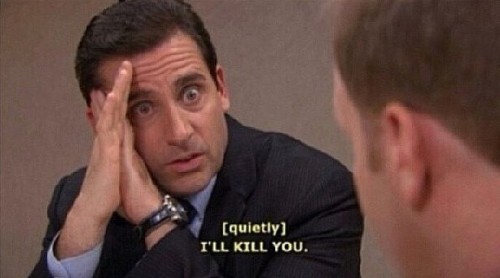
Duo:
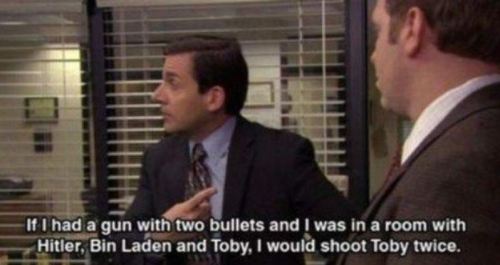
Trowa:

Quatre:
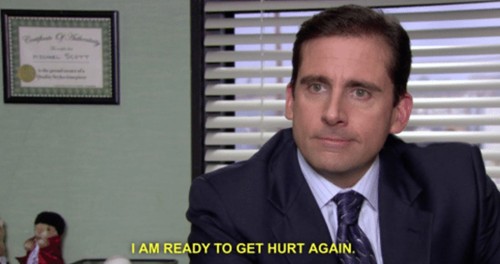
Wufei:
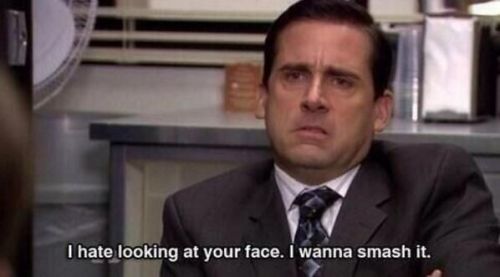
Zechs:
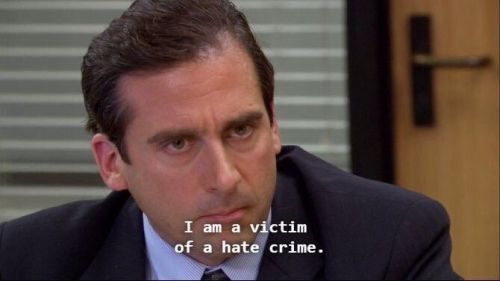
Treize:
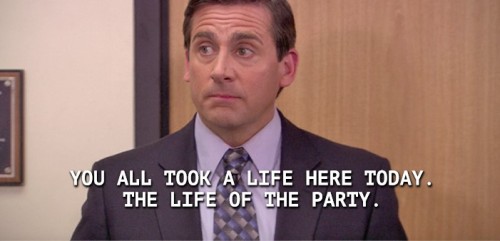
Bonus: Amnesiac!Trowa
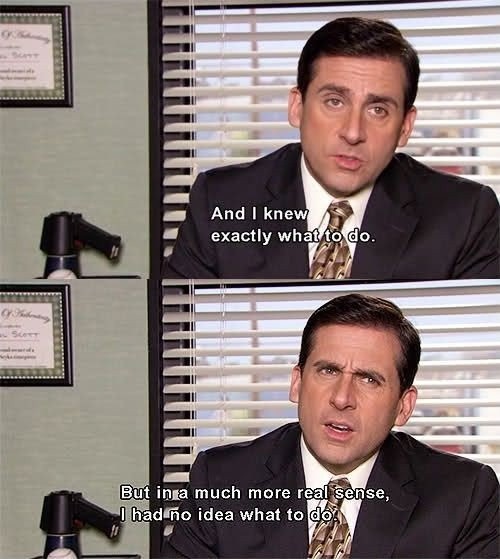
[in the groupchat]
Duo: Y’all think lava would taste spicy?
Quatre: Please don’t eat lava
Heero: Do whatever you want Duo
Trowa: Actually since it’s made of molten rock, it’d probably taste very bland and dusty
Duo: Trowa you’re the only one who fucking understands
[at the graveyard at the end of the series]
Noin: …I know that he’s still alive, somewhere out there…
[somewhere in the background]
Treize, sneaking away: don’t don’t be suspicious…
Zechs, also sneaking away: don’t be suspicious…
Treize: don’t don’t be suspicious…
Zechs, beginning to sing and dance: don’t be so suspicious, don’t be suspicious~
Treize, singing along: don’t be suspicious! dON’T BE SUSPICIOUS–
Noin: HEY
Ikuze gets paid to watch Gundam Wing - Relena’s initial interest in Heero
This happened in English class. Since it’s an analysis, I decided to share.
Ikuze: What reason do you think Relena has to be so interested in Heero during these first episodes?
Student: I think she is bored in her life. Like at that party. And he is mysterious and the first exciting thing to happen to her, so that’s why she is so interested. She may also have a bit of a crush on him?
Ikuze: …Goodness, quoted verbatim! Some things don’t change, huh? xD
Student: ?
Ikuze: You just said the exact same thing the majority of the fandom has said as well. But okay. Can you think of any other reason he piqued her interest?
Student: Um……..
Ikuze: Where did she find him initially?
Student: On the beach.
Ikuze: And what was he wearing?
Student: A military spacesuit.
Ikuze: Correct. What happened next?
Student: Heero pulled a GTA with the ambulance.
Ikuze: lmao Yup. What do you think Relena thought of him at that moment?
Student: That he is weird?
Ikuze: That would stand to reason. Now, when’s the next time she sees him?
Student: In her school, when he enrolled.
Ikuze: What do you think was going through her mind when she saw him?
Student: That he followed her? Or at least that he wasn’t just a normal student. And then he also threatens to kill her. And she later also says that in the car, that he wants to kill her because she discovered his secret!
Ikuze: Very good! So… do you think she found him exciting?
Student: No, I’d rather say he was suspicious.
Ikuze: Ah! Now there’s a statement. Let’s fast-forward to her party. What happens?
Student: The party starts and her friends are there, but she is thinking about Heero-
Ikuze: Wait, you missed the radio announcement.
Student: The radio announcement?
Ikuze: Yes, the one where the newsperson says that the rumors about rebels descending to Earth were false and that it was just trash.
Student: Right! And Relena knows it’s a lie because she saw Heero!
Ikuze: Yes! So what does she think Heero is?
Student: A rebel?
Ikuze: Yes! And what happens next?
Student: She hears he is at the harbor from that boy and goes to him.
Ikuze: What kind of harbor is it?
Student: Uh…
Ikuze: A military one.
Student: Oh.
Ikuze: What would Heero be doing at a military harbor?
Student: Blowing things up and killing people. Which is what he ends up doing.
Ikuze: Do you think Relena would expect that, too, given what she knows about him?
Student: …Yes.
Ikuze: So do you think she followed him to the harbor because her party was boring her?
Student: No, she wanted to stop him. ^^;
Ikuze: Exactly. She is the VFM’s daughter who just got out of a meeting about the possibility of impending rebel attacks from the colonies. To which she accompanied him. What she is doing is the same thing as her father: she is trying to stop the start of a war. Not hunt for a boyfriend. xD
Student: Right. xD
Ikuze: So, if I asked you again now what the reason for Relena’s initial interest in Heero is..?
Student: I’d say it’s because he is sus. But she may also have a crush on him and find him exciting..!
Ikuze: Hey, could be. I’m not arguing it’s not, especially if you look at the final episodes, I’m just saying it wouldn’t be the main reason. But let me ask you an interesting question: why was your first thought that she was attracted to him and his mystery?
Student: Well, it’s what always happens in movies. He is a boy, she is a girl, they’re the protagonists… Every spy movie is like that.
Ikuze: *nods* And this is the lesson we learned today: stereotypes and how little it takes to invoke them.
OZ Soldier: Turn around!
Duo, singing: Every now and then I get a little bit lonely and you’re never comin’ round~
OZ Soldier: TURN AROUND!!
Duo: Every now an- [gets tased]





HAPPY HOLIDAY!! :D
Body Language: Eyes
So I stumbled across this really useful thing which I use for writing and wanted to share it with you all.
(source: changingminds.org)
The eyes are often called, with some justification, ‘the windows of the soul’ as they can send many different non-verbal signals. For reading body language this is quite useful as looking at people’s eyes are a normal part of communication (whilst gazing at other parts of the body can be seen as rather rude). When a person wears dark glasses, especially indoors, this prevents others from reading their eye signals. It is consequently rather disconcerting, which is why ‘gangsters’ and those seeking to appear powerful sometimes wear them.
Looking Up
When a person looks upwards they are often thinking. In particular they are probably making pictures in their head and thus may well be an indicator of a visual thinker.
When they are delivering a speech or presentation, looking up may be their recalling their prepared words.
Looking upwards and to the left can indicate recalling a memory. Looking upwards and the right can indicate imaginative construction of a picture (which can hence betray a liar). Be careful with this: sometimes the directions are reversed — if in doubt, test the person by asking them to recall known facts or imagine something.
Looking up may also be a signal of boredom as the person examines the surroundings in search of something more interesting.
Head lowered and eyes looking back up at the other person is a coy and suggestive action as it combines the head down of submission with eye contact of attraction. It can also be judgemental, especially when combined with a frown.
Looking Down
Looking at a person can be an act of power and domination. Looking down involves not looking at the other person, which hence may be a sign of submission (‘I am not a threat, really; please do not hurt me. You are so glorious I would be dazzled if I looked at you.’)
Looking down can thus be a signal of submission. It can also indicate that the person is feeling guilty.
A notable way that a lower person looks down at a higher person is by tilting their head back. Even taller people may do this.
Looking down and to the left can indicate that they are talking to themselves (look for slight movement of the lips). Looking down and to the right can indicate that they are attending to internal emotions.
In many cultures where eye contact is a rude or dominant signal, people will look down when talking with others in order to show respect.
Looking Sideways
Much of our field of vision is in the horizontal plane, so when a person looks sideways, they are either looking away from what is in front of them or looking towards something that has taken their interest.
A quick glance sideways can just be checking the source of a distraction to assess for threat or interest. It can also be done to show irritation (‘I didn’t appreciate that comment!’).
Looking to the left can indicate a person recalling a sound. Looking to the right can indicate that they are imagining the sound. As with visual and other movements, this can be reversed and may need checking against known truth and fabrication.
Lateral movement
Eyes moving from side-to-side can indicate shiftiness and lying, as if the person is looking for an escape route in case they are found out.
Lateral movement can also happen when the person is being conspiratorial, as if they are checking that nobody else is listening.
Eyes may also move back and forth sideways (and sometimes up and down) when the person is visualizing a big picture and is literally looking it over.
Gazing
Looking at something shows an interest in it, whether it is a painting, a table or a person. When you look at something, then others who look at your eyes will feel compelled to follow your gaze to see what you are looking at. This is a remarkable skill as we are able to follow a gaze very accurately.
When looking at a person normally, the gaze is usually at eye level or above (see eye contact, below). The gaze can also be a defocused looking at the general person.
Looking at a person’s mouth can indicate that you would like to kiss them. Looking at sexual regions indicates a desire to have sexual relations with them.
Looking up and down at a whole person is usually sizing them up, either as a potential threat or as a sexual partner (notice where the gaze lingers). This can be quite insulting and hence indicate a position of presumed dominance, as the person effectively says ‘I am more powerful than you, your feelings are unimportant to me and you will submit to my gaze’.
Looking at their forehead or not at them indicates disinterest. This may also be shown by defocused eyes where the person is ‘inside their head’ thinking about other things.
The power gaze is a short but intense gaze that is used to impose one’s will on another, showing power without aggression.
It is difficult to conceal a gaze as we are particularly adept at identifying exactly where other people are looking. This is one reason why we have larger eye whites than animals, as it aids complex communication.
People who are lying may look away more often as they feel guilty when looking at others. However, when they know this, they may over-compensate by looking at you for longer than usual. This also helps them watch your body language for signs of detection.
The acceptable duration of a gaze varies with culture and sometimes even a slight glance is unacceptable, such as between genders or by a lower status person.
Non-visual gaze patterns (NVGPs) involve rapid movements (saccades) and fixations while we are ‘inside our heads’, thinking. Rapid movements happen more when we are accessing long-term memory and fixations more when we are accessing working memory. This is useful to detect whether people are thinking about older events or recent events (or old events that are already brought to working memory).
Glancing
Glancing at something can betray a desire for that thing, for example glancing at the door can indicate a desire to leave.
Glancing at a person can indicate a desire to talk with them. It can also indicate a concern for that person’s feeling when something is said that might upset them.
Glancing may indicate a desire to gaze at something or someone where it is forbidden to look for a prolonged period.
Glancing sideways at a person with raised eyebrows can be a sign of attraction. Without the raised eyebrow it is more likely to be disapproval.
Eye Contact
Eye contact between two people is a powerful act of communication and may show interest, affection or dominance.
Doe Eyes
A softening of the eyes, with relaxing of muscles around the eye and a slight defocusing as the person tries to take in the whole person is sometimes called doe eyes, as it often indicates sexual desire, particularly if the gaze is prolonged and the pupils are dilated (see below). The eyes may also appear shiny.
Making Eye Contact
Looking at a person acknowledges them and shows that you are interested in them, particularly if you look in their eyes.
Looking at a person’s eyes also lets you know where they are looking. We are amazingly good at detecting what they are looking at and can detect even a brief glance at parts of our body, for example.
If a person says something when you are looking away and then you make eye contact, then this indicates they have grabbed your attention.
Breaking eye contact
Prolonged eye contact can be threatening, so in conversation we frequently look away and back again.
Breaking eye contact can indicate that something that has just been said that makes the person not want to sustain eye contact, for example that they are insulted, they have been found out, they feel threatened, etc. This can also happen when the person thinks something that causes the same internal discomfort. Of course, a break in eye contact can also be caused by something as simple as dried out contacts or any new stimulus in one’s immediate area, so it’s important to watch for other signals.
Looking at a person, breaking eye contact and then looking immediately back at them is a classic flirting action, particularly with the head held coyly low in suggested submission.
Long eye contact
Eye contact longer than normal can have several different meanings.
Eye contact often increases significantly when we are listening, and especially when we are paying close attention to what the other person is saying. Less eye contact is used when talking, particularly by people who are visual thinkers as they stare into the distance or upwards as they ‘see’ what they are talking about.
We also look more at people we like and like people who look at us more. When done with doe eyes and smiles, it is a sign of attraction. Lovers will stare into each others eyes for a long period. Attraction is also indicated by looking back and forth between the two eyes, as if we are desperately trying to determine if they are interested in us too.
An attraction signal that is more commonly used by women is to hold the other person’s gaze for about three seconds, Then look down for a second or two and then look back up again (to see if they have taken the bait). If the other person is still looking at them, they are rewarded with a coy smile or a slight widening of the eyes (‘Yes, this message is for you!’).
When done without blinking, contracted pupils and an immobile face, this can indicate domination, aggression and use of power. In such circumstances a staring competition can ensue, with the first person to look away admitting defeat.
Prolonged eye contact can be disconcerting. A trick to reduce stress from this is to look at the bridge of their nose. They will think you are still looking in their eyes.
Sometimes liars, knowing that low eye contact is a sign of lying, will over-compensate and look at you for a longer than usual period. Often this is done without blinking as they force themselves into this act. They may smile with the mouth, but not with the eyes as this is more difficult.
Limited eye contact
When a person makes very little eye contact, they may be feeling insecure. They may also be lying and not want to be detected.
In persuasion
Eye contact is very important for persuasion. If you look at the other person and they do not look back at you, then their attention is likely elsewhere. Even if they hear you, the lack of eye contact reduces the personal connection.
If you want to persuade or change minds, then the first step is to gain eye contact and then sustain it with regular reconnection.
Staring
Staring is generally done with eyes wider than usual, prolonged attention to something and with reduced blinking. It generally indicates particular interest in something or someone.
Staring at a person can indicate shock and disbelief, particularly after hearing unexpected news.
When the eyes are defocused, the person’s attention may be inside their head and what they are staring at may be of no significance. (Without care, this can become quite embarrassing for them).
Prolonged eye contact can be aggressive, affectionate or deceptive and is discussed further above. Staring at another’s eyes is usually more associated with aggressive action.
A short stare, with eyes wide open and then back to normal indicates surprise. The correction back to normal implies that the person would like to stare more, but knows it is impolite (this may be accompanied with some apologetic text).
When a person stares at another, then the second person may be embarrassed and look away. If they decide to stare back, then the people ‘lock eyes’ and this may become a competition with the loser being the person who looks away first.
The length of an acceptable stare varies across cultures, as does who is allowed to stare, and at what. Babies and young children stare more, until they have learned the cultural rules.
Following
The eyes will naturally follow movement of any kind. If the person is looking at something of interest then they will naturally keep looking at this. They also follow neutral or feared things in case the movement turns into a threat.
This is used when sales people move something like a pen or finger up and down, guiding where the customer looks, including to eye contact and to parts of the product being sold.
Squinting
Narrowing of a person’s eyes can indicate evaluation, perhaps considering that something told to them is not true (or at least not fully so).
Squinting can also indicate uncertainty (‘I cannot quite see what is meant here.’)
Narrowing eyes has a similar effect to constricted pupils in creating a greater depth of field so you can see more detail. This is used by animals when determining distance to their prey and can have a similar aggressive purpose.
Squinting can be used by liars who do not want the other person to detect their deception.
When a person thinks about something and does not want to look at the internal image, they may involuntarily squint.
Squinting can also happen when lights or the sun are bright.
Lowering of eyelids is not really a squint but can have a similar meaning. It can also indicate tiredness.
Lowering eyelids whilst still looking at the other person can be a part of a romantic and suggestive cluster, and may be accompanied with tossing back the head and slightly puckering the lips in a kiss.
Blinking
Blinking is a neat natural process whereby the eyelids wipe the eyes clean, much as a windscreen wiper on a car.
Blink rate tends to increase when people are thinking more or are feeling stressed. This can be an indication of lying as the liar has to keep thinking about what they are saying. Realizing this, they may also force their eyes open and appear to stare.
Blinking can also indicate rapport, and people who are connected may blink at the same rate. Someone who is listening carefully to you is more likely to blink when you pause (keeping eyes open to watch everything you say).
Beyond natural random blinking, a single blink can signal surprise that the person does not quite believe what they see (‘I’ll wipe my eyes clean to better see’).
Rapid blinking blocks vision and can be an arrogant signal, saying ‘I am so important, I do not need to see you’.
Rapid blinking also flutters the eyelashes and can be a coy romantic invitation.
Reduced blinking increases the power of a stare, whether it is romantic or dominant in purpose.
Winking
Closing one eye in a wink is a deliberate gesture that often suggests conspiratorial (‘You and I both understand, though others do not’).
Winking can also be a slightly suggestive greeting and is reminiscent of a small wave of the hand (‘Hello there, gorgeous!’).
Closing
Closing the eyes shuts out the world. This can mean ‘I do not want to see what is in front of me, it is so terrible’.
Sometimes when people are talking they close their eyes. This is an equivalent to turning away so eye contact can be avoided and any implied request for the other person to speak is effectively ignored.
Visual thinkers may also close their eyes, sometimes when talking, so they can better see the internal images without external distraction.
Damp
The tear ducts provide moisture to the eyes, both for washing them and for tears.
Damp eyes can be suppressed weeping, indicating anxiety, fear or sadness. It can also indicate that the person has been crying recently.
Dampness can also occur when the person is tired (this may be accompanied by redness of the eyes.
Tears
Actual tears that roll down the cheeks are often a symptom of extreme fear or sadness, although paradoxically you can also weep tears of joy.
Weeping can be silent, with little expression other than the tears (indicating a certain amount of control). It also typically involves screwing up of the face and, when emotions are extreme, can be accompanied by uncontrollable, convulsive sobs.
Men in many culture are not expected to cry and learn to suppress this response, not even being able to cry when alone. Even if their eyes feel damp they may turn away.
Tears and sadness may be transformed into anger, which may be direct at whoever is available.
Pupil Size
A subtle signal that is sometimes detected only subconsciously and is seldom realized by the sender is where the pupil gets larger (dilates) or contracts.
Sexual desire is a common cause of pupil dilation, and is sometimes called ‘doe eyes’ or ‘bedroom eyes’ (magazine pictures sometimes have deliberately doctored eyes to make a model look more attractive). When another person’s eyes dilate we may be attracted further to them and our eyes dilate in return. Likewise, when their pupils are small, ours may well contract also.
A fundamental cause of eye dilation is cognitive effort. When we are thinking more, our eyes dilate. This helps explain ‘doe eyes’ as when we like others people, looking at them leads to significant thinking about how we may gain and sustain their attention.
Pupils dilate also when it is darker to let in more light. Perhaps this is why clubs, bars, restaurants and other romantic venues are so dingy.
People with dark irises (the colored circle around the pupil) can look attractive because it is difficult to distinguish the iris from the pupil, with the effect is that their dark pupils look larger than they are. People with light irises make the pupils easier to see, so when their pupils actually do dilate then the signal is clearer to detect, making them more attractive ‘at the right time’.
The reverse of this is that pupils contract when we do not like the other person, perhaps in an echo of squint-like narrowing of the eyes. People with small pupils can hence appear threatening or just unpleasant.
Rubbing
When a person is feeling uncomfortable, the eyes may water a little. To cover this and try to restore an appropriate dryness, they person may rub their eye and maybe even feign tiredness or having something in the eye. This also gives the opportunity to turn the head away.
The rubbing may be with one finger, with a finger and thumb (for two eyes) or with both hands. The more the coverage, the more the person is trying to hide behind the hands.
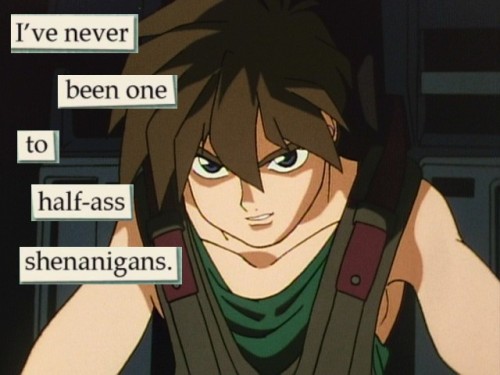






Troubled Birds: GW Boys Edition
-
 eternalparadisearchive reblogged this · 4 weeks ago
eternalparadisearchive reblogged this · 4 weeks ago -
 explosiv-glasses liked this · 8 months ago
explosiv-glasses liked this · 8 months ago -
 star-of-the-sea-ta liked this · 9 months ago
star-of-the-sea-ta liked this · 9 months ago -
 chisimmer reblogged this · 1 year ago
chisimmer reblogged this · 1 year ago -
 chisimmer liked this · 1 year ago
chisimmer liked this · 1 year ago -
 godisdeadandikiliedher liked this · 2 years ago
godisdeadandikiliedher liked this · 2 years ago -
 lostcybertronian liked this · 2 years ago
lostcybertronian liked this · 2 years ago -
 iprefertostayanonymous liked this · 2 years ago
iprefertostayanonymous liked this · 2 years ago -
 calicoboy liked this · 2 years ago
calicoboy liked this · 2 years ago -
 excited-insomniac liked this · 2 years ago
excited-insomniac liked this · 2 years ago -
 paintedpigeon1 reblogged this · 2 years ago
paintedpigeon1 reblogged this · 2 years ago -
 paintedpigeon1 liked this · 2 years ago
paintedpigeon1 liked this · 2 years ago -
 artabloom liked this · 2 years ago
artabloom liked this · 2 years ago -
 yenoodlethings liked this · 2 years ago
yenoodlethings liked this · 2 years ago -
 dntmssupmytempo liked this · 2 years ago
dntmssupmytempo liked this · 2 years ago -
 totallyteejay liked this · 3 years ago
totallyteejay liked this · 3 years ago -
 satantic-redhead liked this · 3 years ago
satantic-redhead liked this · 3 years ago -
 writing-hours reblogged this · 3 years ago
writing-hours reblogged this · 3 years ago -
 moss-gender liked this · 3 years ago
moss-gender liked this · 3 years ago -
 b-chupacabra liked this · 3 years ago
b-chupacabra liked this · 3 years ago -
 taichrobin liked this · 3 years ago
taichrobin liked this · 3 years ago -
 mysterionmirth reblogged this · 3 years ago
mysterionmirth reblogged this · 3 years ago -
 princessnijireikiterminated liked this · 3 years ago
princessnijireikiterminated liked this · 3 years ago -
 josyy-rnn liked this · 4 years ago
josyy-rnn liked this · 4 years ago -
 usagi-peach-tea liked this · 4 years ago
usagi-peach-tea liked this · 4 years ago -
 goldengills liked this · 4 years ago
goldengills liked this · 4 years ago -
 oxymitch-archive liked this · 4 years ago
oxymitch-archive liked this · 4 years ago -
 thearchivething reblogged this · 4 years ago
thearchivething reblogged this · 4 years ago -
 stresstiddies liked this · 4 years ago
stresstiddies liked this · 4 years ago -
 luc1ddre4m reblogged this · 4 years ago
luc1ddre4m reblogged this · 4 years ago -
 luc1ddre4m liked this · 4 years ago
luc1ddre4m liked this · 4 years ago -
 finleyrose liked this · 5 years ago
finleyrose liked this · 5 years ago -
 crashinghades liked this · 5 years ago
crashinghades liked this · 5 years ago -
 hellolcstisland liked this · 5 years ago
hellolcstisland liked this · 5 years ago -
 amichalap liked this · 5 years ago
amichalap liked this · 5 years ago -
 bittermin reblogged this · 5 years ago
bittermin reblogged this · 5 years ago -
 sevenknightingales liked this · 5 years ago
sevenknightingales liked this · 5 years ago -
 iocassandra liked this · 5 years ago
iocassandra liked this · 5 years ago -
 dancing-chaos liked this · 5 years ago
dancing-chaos liked this · 5 years ago -
 goneau2xr reblogged this · 5 years ago
goneau2xr reblogged this · 5 years ago -
 sugathingcycle liked this · 6 years ago
sugathingcycle liked this · 6 years ago -
 rucisco liked this · 6 years ago
rucisco liked this · 6 years ago -
 johnny-guitarr liked this · 6 years ago
johnny-guitarr liked this · 6 years ago

Go away, there's nothing for you here. I ship Duo and Relena and you'll pry my rarepair from my cold dead hands.
259 posts